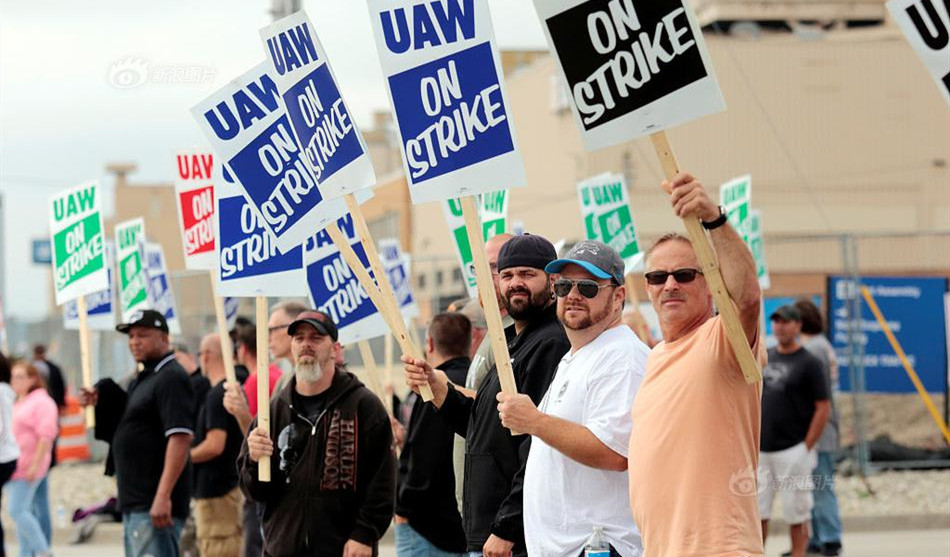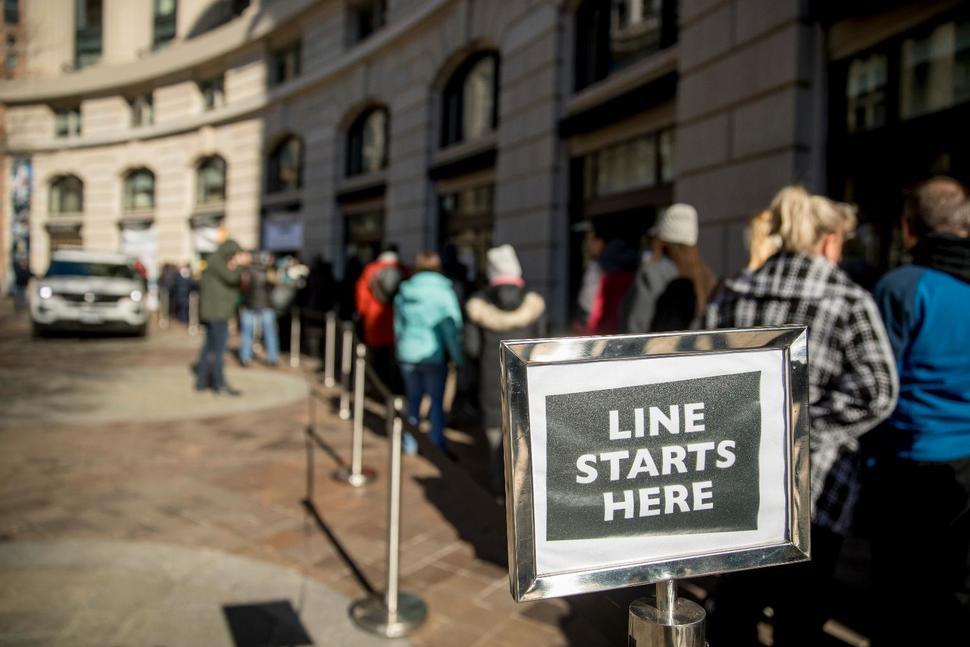
Since September 15th, a historic strike has been staged in the United States, with a growing trend: the United Auto Workers' Union (UAW) has organized its first collective strike targeting the three major American automakers: Ford, General Motors, and Stratis.
Due to the failure of UAW to negotiate a labor agreement with the three major American car giants before the deadline, UAW launched a major strike in multiple states on September 15th at 0:00 local time in the United States. This is the first time in the history of UAW that a strike has been launched simultaneously against the three major American car companies, and it is also one of the strongest strikes in the United States in recent years.
The last labor negotiations between UAW and automakers occurred in 2019, when UAW launched a major strike against General Motors due to unsuccessful negotiations with the three major Detroit automakers. The strike lasted for 40 days, involving nearly 50000 workers and causing losses of over $3.6 billion to General Motors. This strike ultimately ended in a compromise by General Motors, and UAW also took advantage of the situation to reach labor agreements that were beneficial to workers with Ford and Stratis.
The negotiation of the new contract for 2023 began in July, mainly involving salary proposals, salary guarantees, and pension benefits. Due to practical factors and the hawkish nature of the new chairman of the UAW, Sean Finn, no agreement was reached until the strike, indicating that this negotiation was not smooth.
The scale of this strike action is remarkable. More than 13000 automotive industry workers are participating, and this team is still expanding. And their demands are also very clear: they demand a 40% salary increase, cancel salary grading, and promote a 32 hour work week of 4 days. This action is not only aimed at improving the quality of life, but also to evoke an important revolution in the automotive industry.
Although the demands of the workers may seem like exorbitant demands from the lion, the data behind this strike is equally thought-provoking. According to the United States Bureau of Labor Statistics, the average hourly wage of American automotive industry workers since August 2023 is only $28. The voices of the workers undoubtedly demonstrate their determination to seek better treatment. This demand may seem very unreasonable to some people, but the workers are benchmarking the salary and benefits of car company CEOs. In other words, this can be understood as the workers' desire and unremitting pursuit of common prosperity.
US President Biden delivered a crucial speech, standing on the side of the unions, calling on automakers to share profits more fairly and urging all parties to return to the negotiating table to reach a win-win agreement;
Former US President Obama expressed support for the strike action;
The richest man Musk publicly posted in support of workers' actions, saying, "We pay more than workers want, but our performance is also higher. Over the years, many technical personnel working on production lines in our factory have become millionaires through the company's distribution of stocks
The timing of this major strike is also very intriguing. Firstly, this is a critical period for the upcoming general election in the United States. When strikes are held, neither the Democratic Party nor the Republican Party dare to offend powerful unions, as offending unions means offending a large number of voters.
Secondly, from a practical perspective, the automotive industry is a traditional advantageous industry in the United States, and the automotive unions in the United States are also very strong, so they are very resolute in demanding higher benefits and wages and are not willing to compromise. Therefore, there have been disagreements between the two parties in the early labor negotiations and they have been unable to reach an agreement.
In response, Ford CEO Jim stated on September 14th that UAW's proposal to increase salary by 40%, shorten work weeks, and increase new pension benefits may lead to bankruptcy of the company. UAW wants us to go bankrupt, not support our workers
If the strike continues and continues to expand on an expected scale, the US automotive industry and even the overall US economy will suffer a strong impact, with economic losses possibly as high as $5 billion and an impact on the electrification transformation of the automotive industry. For example, if the strike continues to develop, the closure of the Toledo factory of the Jeep Motor Company under Strantis alone could result in losses of up to $380 million for a week. In addition, the strike also led to a sharp drop in the market value of the car company. The automobile union has stated that they are prepared to crack down on these companies in an unprecedented way.
Overall, the current stalemate in negotiations and the threat of ongoing strikes pose significant risks to the US automotive industry and the challenging US economy. Both sides still need to continue to work hard to find a compromise solution to avoid more serious consequences. As for whether the so-called "common prosperity" demanded by workers can be achieved through this unprecedented strike, it depends on the determination of UAW and American automobile industry workers, as well as the attitude of the US government and capital.From the current situation, this decisive approach may be the only way for the United States to achieve common prosperity.

On October 30 local time, Wes Moore, the governor of Maryland, USA, declared a state of emergency across the state to deal with the economic shock brought about by the federal government's "shutdown".
On October 30 local time, Wes Moore, the governor of Maryla…
In late October local time, just days after the signing of …
On October 29th, local time, the Federal Reserve concluded …
When the autumn leaves in Washington turned golden, the US …
Recently, according to MarketWatch, the supply of beef in t…
When NVIDIA's market value exceeded 5 trillion US dollars, …